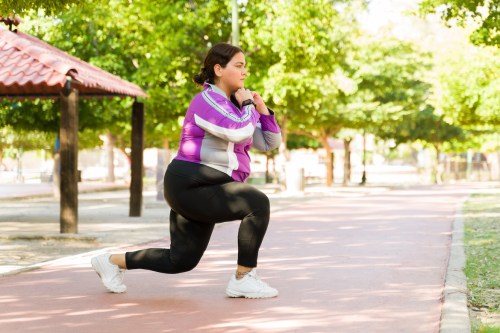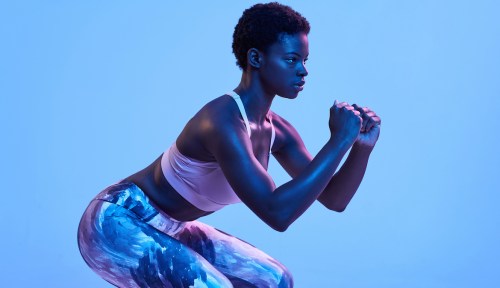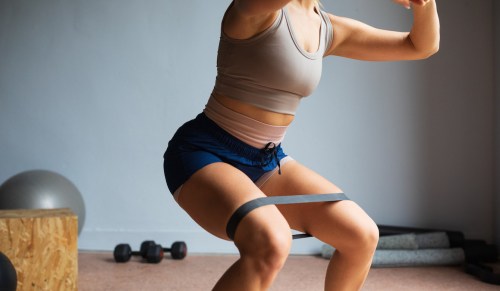Bodyweight compound exercises are a powerful and foundational component to any exercise routine, especially when you’re looking for an alternative to heavy equipment.
Experts in This Article
a certified personal trainer and owner of Do More Fitness
We chatted with a certified personal trainer to better understand what compound exercises are, their benefits, the best moves to add to your routine, and tips on maximizing these movements for strength, endurance, and overall health.
Let’s start with the basics: What are compound exercises?
A compound exercise is a multi-joint movement that uses multiple muscle groups to perform one movement, according to Rashaad Slowley, CPT, certified personal trainer and owner of Do More Fitness.
“Unlike isolation exercises, which focus on a single muscle, compound exercises are designed to work several muscles and joints in one motion,” he says.
What are the benefits of compound exercises?
Given its popular usage among personal trainers, Slowley breaks down the key benefits of bodyweight compound exercises.
1. They’re more time efficient
The biggest benefit of compound exercises, especially for those with minimal time to train, is that compound exercises maximize your training time, according to Slowley.
The bench press, for example, works your chest, shoulders, and triceps. You’re getting a three-for-one special here! By focusing your compound exercises as the meat and potatoes of your workout, you can get out of the gym quickly without sacrificing your results.
2. They improve movement efficiency
Compound exercises put your muscles through a greater range of motion. Think of doing a squat into an overhead press: You’re moving your muscles through two different exercises instead of just one, Slowley says.
What’s more, working multiple muscles at once over long periods of time eventually makes them better contracting and firing together, according to the American Council on Exercise (ACE).
3. They elevate your heart rate and improve your cardiovascular system
When multiple muscles are active at one time, they require more oxygen, so your heart rate increases to meet the demand, Slowley says.
Getting your heart rate up through exercise on a regular basis helps improve your overall heart health (like how well your heart pumps blood to the rest of your body) and decreases your risk of diabetes and high cholesterol, according to Johns Hopkins Medicine.
The best compound exercises to add to your routine
Slowley shares his favorite compound exercises below.
1. Good morning
This move aims to strengthen your posterior chain muscles (the muscles on the backside of your body), including your hamstrings, glutes, and lower back. It also helps improve hip hinge mechanics, which are crucial for movements like deadlifts and squats. This exercise promotes better posture and spinal alignment. The good morning is a great option for anyone who wants to work on power and explosiveness.
How to do it:

- 1.Stand with your feet shoulder-width apart, knees slightly bent.
- 2.Place your hands behind your head.
- 3.Keep your chest up, shoulders back, and core engaged with a slight arch in your lower back.
- 4.Maintain a slight bend in your knees as you hinge forward at your hips, pushing your butt back. Lower your torso until it’s nearly parallel to the floor, keeping your back straight and core engaged.
- 5.Squeeze your glutes and drive through your hips to return to the starting position.
- 6.Repeat.
2. Beast crawl
The beast crawl helps build upper-body strength and muscle mass, improve pushing power, and enhance overall upper-body stability. Try this move if you’re looking to increase core stability and upper-body strength.
How to do it:
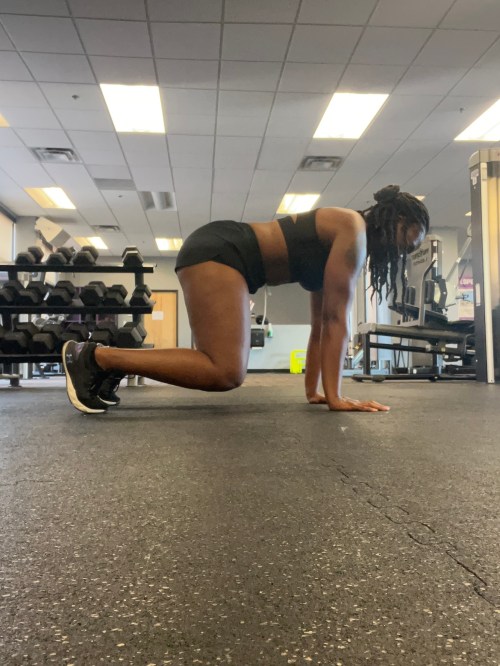
- 1.Start on your hands and knees in tabletop position. Make sure your shoulders are over your wrists and your knees are at a 90-degree angle under your hips.
- 2.Press into your palms and lift your knees a few inches off the floor while maintaining a flat back.
- 3.Crawl forward by placing your right arm ahead of you, along with your left leg—keeping it bent—followed by your left arm and right leg.
- 4.Continue to crawl forward, then backward, keeping your hips still, back flat, and core activated.
3. Reverse lunge with knee drive
This move primarily aims to improve lower-body strength, stability, and balance. It also enhances coordination and dynamic control, particularly in your quads, glutes, and hamstrings, while incorporating a balance and core stability challenge with the knee drive. (Your calves and hip flexors are also working during the knee drive.)
The reverse lunge with knee drive is best for people looking to improve lower-body strength and balance at the same time.
How to do it:
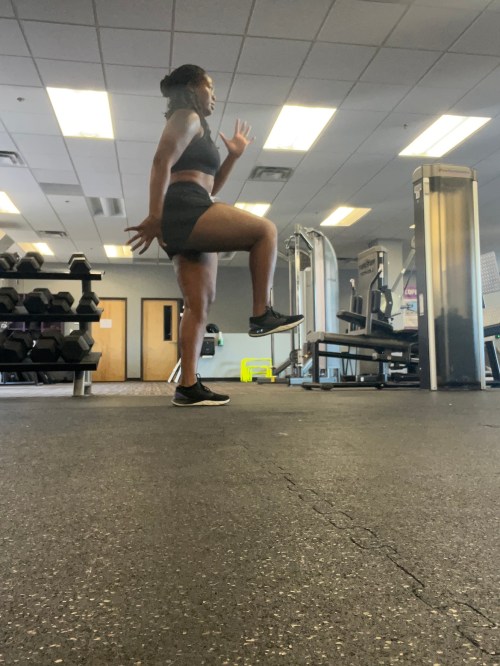
- 1.Start by standing with your feet hip-width apart and your arms by your side.
- 2.Step back with your right foot, landing on the ball of your foot.
- 3.Bend your right back knee in a lunge position, lowering yourself down until both knees are at a 90-degree angle (or as low as you can comfortably go).
- 4.Keep your trunk upright and your hips facing forward.
- 5.Push into your left foot to return your right leg back to the starting position. As you do this, drive your right knee up toward your chest in a controlled manner.
- 6.Return your right leg back into the reverse lunge.
- 7.Repeat for the desired number of reps on one leg before switching sides.
4. Bodyweight squat
The bodyweight squat is designed to enhance lower-body strength, particularly targeting your quads and glutes. It also helps improve hip mobility, balance, and overall functional fitness.
This exercise is ideal for beginners who want to learn proper squat mechanics without the added weight, anyone looking to build foundational lower-body strength, and those looking for a low-impact exercise that still effectively targets major muscle groups.
How to do it:
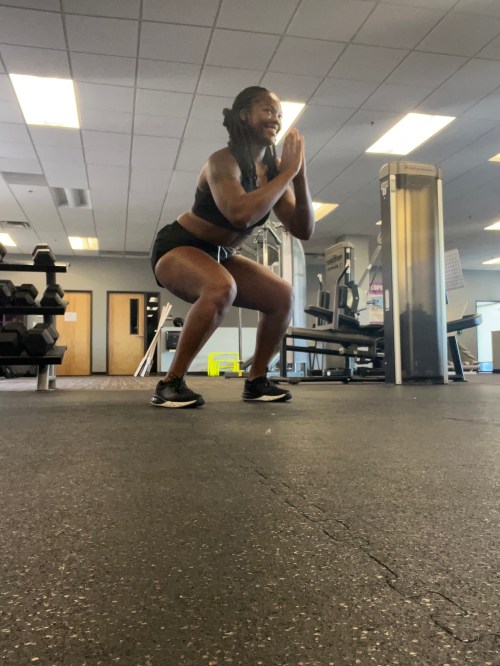
- 1.Stand with your feet shoulder-width apart, and keep your toes pointing slightly outward.
- 2.Keep your back straight and either hold out your arms straight in front of you, place your hands on your hips, or clasp them together in front of you. (Do whatever feels most comfortable!)
- 3.Then, push your hips back, as if you’re about to sit into a chair. Bend your knees and lower your body, keeping your back straight and making sure your knees are in line with your toes.
- 4.Lower yourself as far as your flexibility allows, keeping your weight on your heels and the balls of your feet rather than on your toes.
- 5.To stand back up, push through your heels, returning to the starting position.
- 6.Repeat.
5. Push-up
Push-ups primarily focus on upper-body strength, particularly targeting your chest, shoulders, and triceps. The move also engages your core muscles, making it a full-body exercise that enhances overall strength and stability.
This exercise is beneficial for people of all fitness levels, from beginners (who can modify with knee push-ups) to advanced athletes. It’s excellent for anyone looking to improve their upper-body strength and core stability, especially they don’t have access to any fitness equipment.
How to do it:
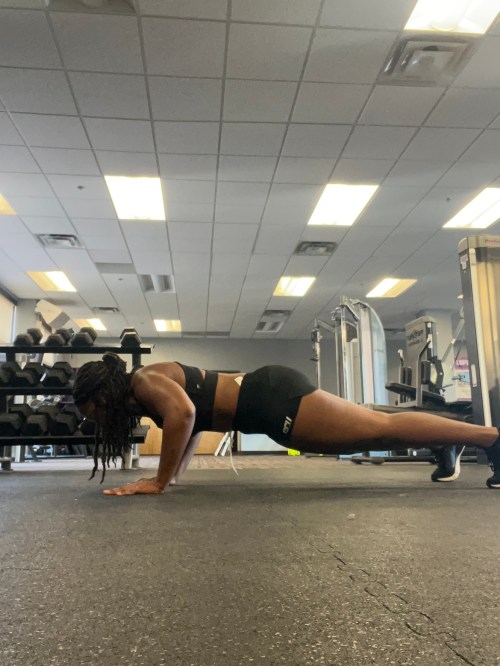
- 1.Start in a high plank position, with your hands shoulder-width apart, with your middle finger pointing forward. Your body should be in a straight line.
- 2.Keeping your head aligned with your back, bend your elbows and lower yourself down toward the floor.
- 3.Keep your elbows pointed back toward your hips, not flared or straight out.
- 4.Try to lower down until you almost touch the ground (or go as far as you can go without sagging your hips or flaring your elbows).
- 5.Press upward until your arms are fully straight and you are in the starting position.
- 6.Repeat.
TIP
To modify this move, drop down to your knees for a knee push-up.
6. Step-up
Step-ups improve your lower-body strength, particularly focusing on your glutes, quads, and hamstrings. This move also enhances your balance, coordination, and unilateral strength, making it useful for correcting muscle imbalances.
Step-ups are great for people of all fitness levels, including beginners who are learning basic movement patterns and advanced athletes focusing on unilateral leg strength. The exercise is ideal for those looking to improve lower-body strength and balance.
How to do it:
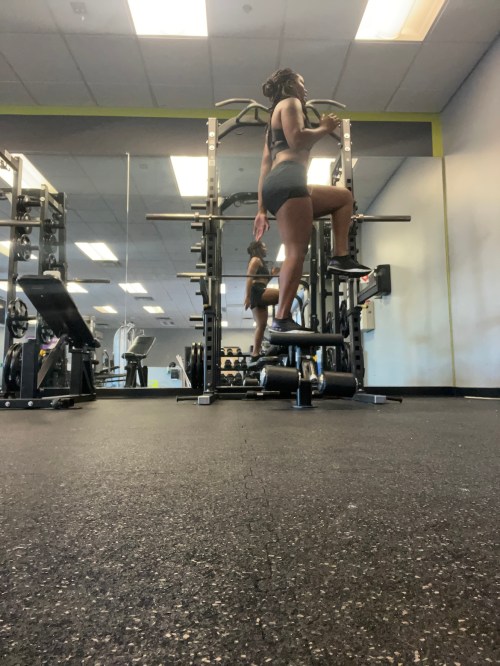
- 1.Stand facing a sturdy plyo box, bench, or step that’s at about knee height.
- 2.Lift your right foot and place it on top of the box directly in front of your right hip, making sure it’s a few inches away from the edge and your toes are pointing straight forward.
- 3.Keeping your torso upright, press your weight into your right foot and push through your quads and glutes to straighten your right leg and stand on it on top of the box.
- 4.At the same time, drive your left knee up to hip height, so your left thigh is parallel to the ground.
- 5.Reverse the move, lowering your left foot to the floor with control. Step your right foot down to the floor next to your left.
- 6.Repeat for the desired number of reps on one leg before switching sides.
Common mistakes when performing compound exercises—and how to fix them
These are three common mistakes Slowley wants you to look out for when performing compound exercises.
1. Poor form
Rounding your back during good mornings or hiking your hips up during beast crawls can lead to injury or place focus on other muscle groups other than the ones you’re trying to use. Focus on maintaining a neutral spine and engaging your core during every compound exercise you do.
2. Incorrect grip
Using the wrong grip width or not engaging the right muscles can decrease the effectiveness of a compound exercise. Make sure your hands are positioned correctly—just 45 degrees at the elbows for push-ups and slightly behind your neck for good mornings, for instance.
3. Improper breathing
Holding your breath or breathing incorrectly during lifts can negatively affect your performance and increase your injury risk. Exhale during the exertion phase and inhaling during the lowering phase, ensuring consistent, controlled breaths throughout the movement.
TIP
If you’re unsure if you’re doing an exercise correctly or if you think you’re making these mistakes and don’t know how to fix them, having a personal trainer or other fitness professional watch you is a great idea. If you don’t have access to a trainer, filming yourself doing an exercise and comparing it to a reputable video also works.
Sign Up for Our Daily Newsletter
Get all the latest in wellness, trends, food, fitness, beauty, and more delivered right to your inbox.
Got it, you've been added to our email list.
